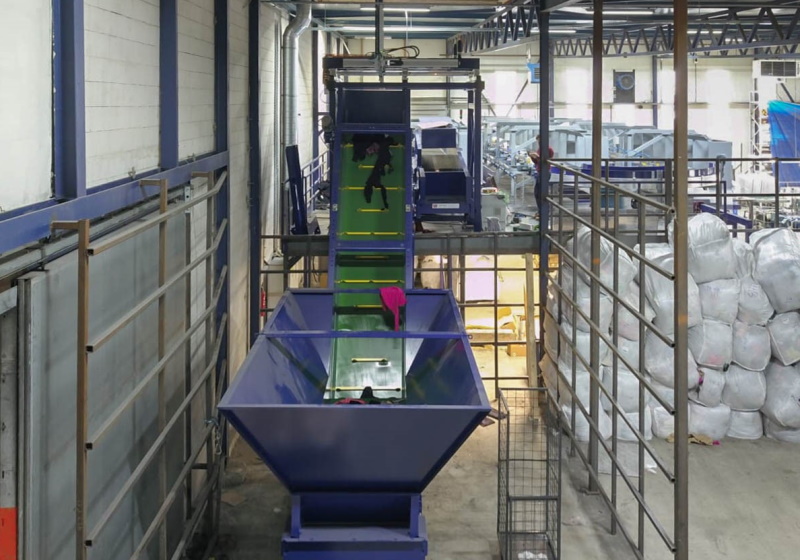If the Textile industry were to follow the example of the fashion industry, the textile waste produced would no longer be a landfill and could be used to make new products. However, the current situation is far from ideal. To be effective, the system must be expanded to involve all players at every step of the value chain, including product development and product manufacturing. This would ensure that textile waste is recycled to create high-quality raw materials for new products. Textile Waste Is Brought Back Into Life Through Fibersort
Textile Waste
The introduction of technologies such as Fibersort is one way to increase the recycling of post-consumer textile waste. These technologies are not yet widely adopted, but they have huge potential for improving the recycling process. By separating non-rewearable textiles, they could become valuable feedstock for the textile-to-textile recycling industry. These textiles are currently disposed of in landfills or incinerators.
The project, funded by Interreg North-West Europe, is designed to sort and recycle non-rewearable textile waste. The process sorts non-rewearable textiles by colour and composition, resulting in a high-quality feedstock for recycling. Unlike incineration and land-filling, this process allows textile resources to continuously cycle through the supply chain. The consortium is seeking to attract other partners in the textile industry to join the project.
The Netherlands generates 90000 tonnes of post-consumer textile waste every year, equivalent to the size of 20 Eiffel towers. However, only a fraction of this waste is recycled, with best efforts reprocessing only about a third of this material. In North-West Europe, the Wieland/Smart Fibersorting facility sorts more than 200 tons of textile waste per week. Of this amount, around half is re-wearable, and the rest is resold in the country or exported.
Automated Sorting Technology
The future of the textile industry will be bright if fibersorts can sort out non-rewearable textiles. Traditionally, non-rewearable textiles have one fate: either to be disposed of in landfills or incinerated. With fibersorts, these materials can be reused as valuable feedstock for textile-to-textile recycling. In addition to preventing landfills from filling up with unwanted materials, fibersorts can be used to bring these textiles back to life.
A Dutch consortium developed the fibersort machine, which uses cutting-edge automated sorting technology to turn post-consumer textiles back into valuable post-consumer products. The machine can sort up to 900 kg of textile waste per hour, transforming it from a source of low-value waste into a useful resource. The Fibersort system is a critical link in the circular supply chain, enabling textile resources to cycle continuously through the supply chain.
Barriers to Market Uptake
The growing mountain of post-consumer textile waste is the perfect opportunity for recycling. By breaking down waste into recyclable components, the process creates a market pull for recycled content. These materials can then be incorporated into new textile products. By using these recycled materials in a new manufacturing process, companies can test for product safety and varied applications. Barriers to market uptake for textile waste brought back into life through Fibersort are largely technological.
Although it is easy to sort textile waste using automated sorting technologies, the process is hampered by several challenges. These barriers range from technological development to socio-cultural concerns. This article will discuss the key challenges to market uptake for textile waste brought back into life through Fibersort. Despite its potential, the project isn’t complete without addressing these obstacles. The Interreg NWE Fibersort project will end in March 2020, but partners in the consortium expect to continue working on achieving this circular ambition.
Creative Reuse of Post-Consumer Textiles
The new Fibersort machine is set to be launched on 12 March, but unfortunately the project’s Final Symposium has been cancelled, due to the situation with the corona virus. However, the consortium has prepared an online webinar for the general public that will explore the key project outcomes and highlight the experiences of project stakeholders. This webinar will also be held in English. Below are a few key points that you should be aware of:
Increasing consumption means that textiles reach end-of-use quickly, creating mountains of waste. In North-West Europe alone, 4,700 kilo tonnes of post-consumer textiles are generated annually, which is just a fraction of the total global textile waste. Most textiles end up in landfilled, incinerated, or downcycled, and less than twenty-four percent is recovered and recycled into new textiles. That’s equivalent to 50 Eiffel towers’ worth of fabric.

